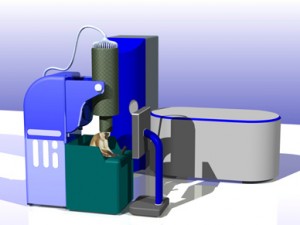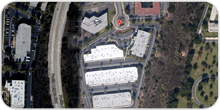The monkeySQUID™ system features a helmet shaped sensor tail that fits the dimensions of macaque monkeys. The system is tailor made to record from intact, awake, behaving macaque monkeys. The design brings sensor coils nearer to cortical sources of interest. The tail curvature is a helmet design tailor-made to put sensors close to specific areas of interest over the cortex. The sensor geometries are made to detect and distinguish features and locations of relevant neural signals.
Use
The MonkeySQUID™ is a technology that can extend ongoing primate research done with invasive electrodes and electrode arrays. MonkeySQUID™ can be used to make non-invasive, whole-cortex measurements awake behaving animals, using the same motor control tasks and visual search tasks as are used for implanted electrode studies. The results can provide specific forecasts and comparisons needed to extend animal models into human applications where non-invasive measurements are most wanted.
The monkeySQUID™ System shown in rendering, with visual display screen. Electronic rack and console are located outside of the magnetically shielded room, not shown.
Technology based on monkeySQUID™ product family.
Features

- 37 gradiometer sensor channels
- Curved tail sized to fit macaque
- Subject Position Tracking hardware and software
- Close-gap spacing from sensor to room temperature for higher sensitivity
Coil array showing location of sensors in dewar tail
Applications
 Detect/localize magnetic fields associated with cortical activity
Detect/localize magnetic fields associated with cortical activity- Functional neurophysiology mapping for direct comparison with invasive methods
- Better spatial localization than electrodes
- Preferentially sensitive to sulcal sources


